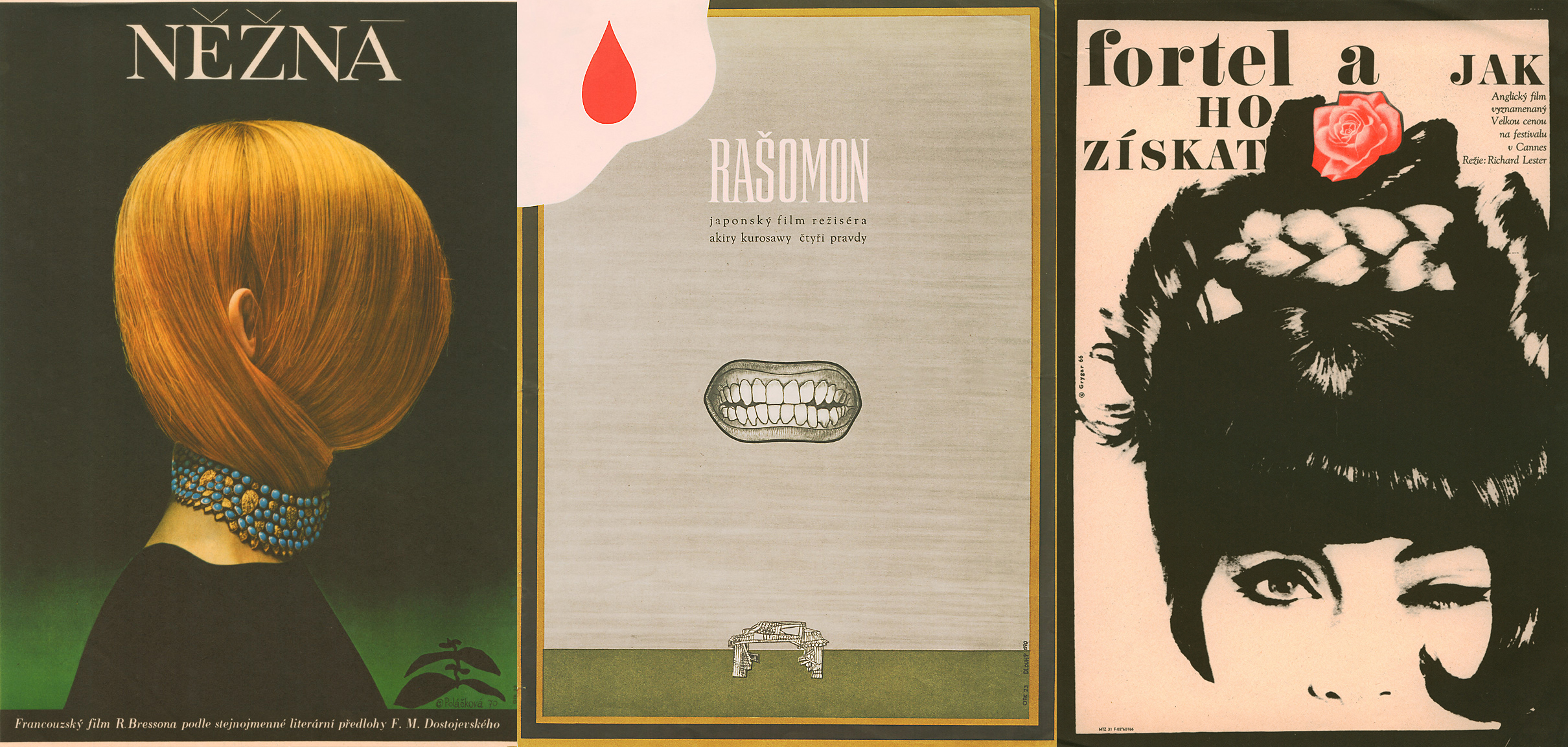Art often thrives as it wriggles out from under a big heavy rock. This can be said about creativity in Czechoslovakia from the 1960s to '80s. As the nation broke free of Stalinism, careered toward the Prague Spring and then finally celebrated the end of Communism in 1989, music, art and film began mixing messages of freedom with an absurd sense of wit and slightly pessimistic world view. One of the less-discussed genres that flourished was that of film posters, many of which were commissioned to established contemporary artists.
When it came to posters for 1960s Czechoslovak New Wave cinema — which found ways to criticize Communism using sarcasm, dark humor, experimental dialogue and nonprofessional actors — it made sense for artists to also experiment with graphic design. Vladimir Bidlo's symbolic collage of luxury foods stuffed inside a helmet therefore seems apt for Milos Forman's 1967 "The Firemen's Ball," the comedic satire that used real firemen as actors and was almost immediately banned in Czechoslovakia.
But it was the application of such vibrant design aesthetics to less unconventional overseas films that is one of the delights of "Czech Posters for Films: From the Collection of Terry Posters," currently showing at The National Film Center, Tokyo.

















With your current subscription plan you can comment on stories. However, before writing your first comment, please create a display name in the Profile section of your subscriber account page.